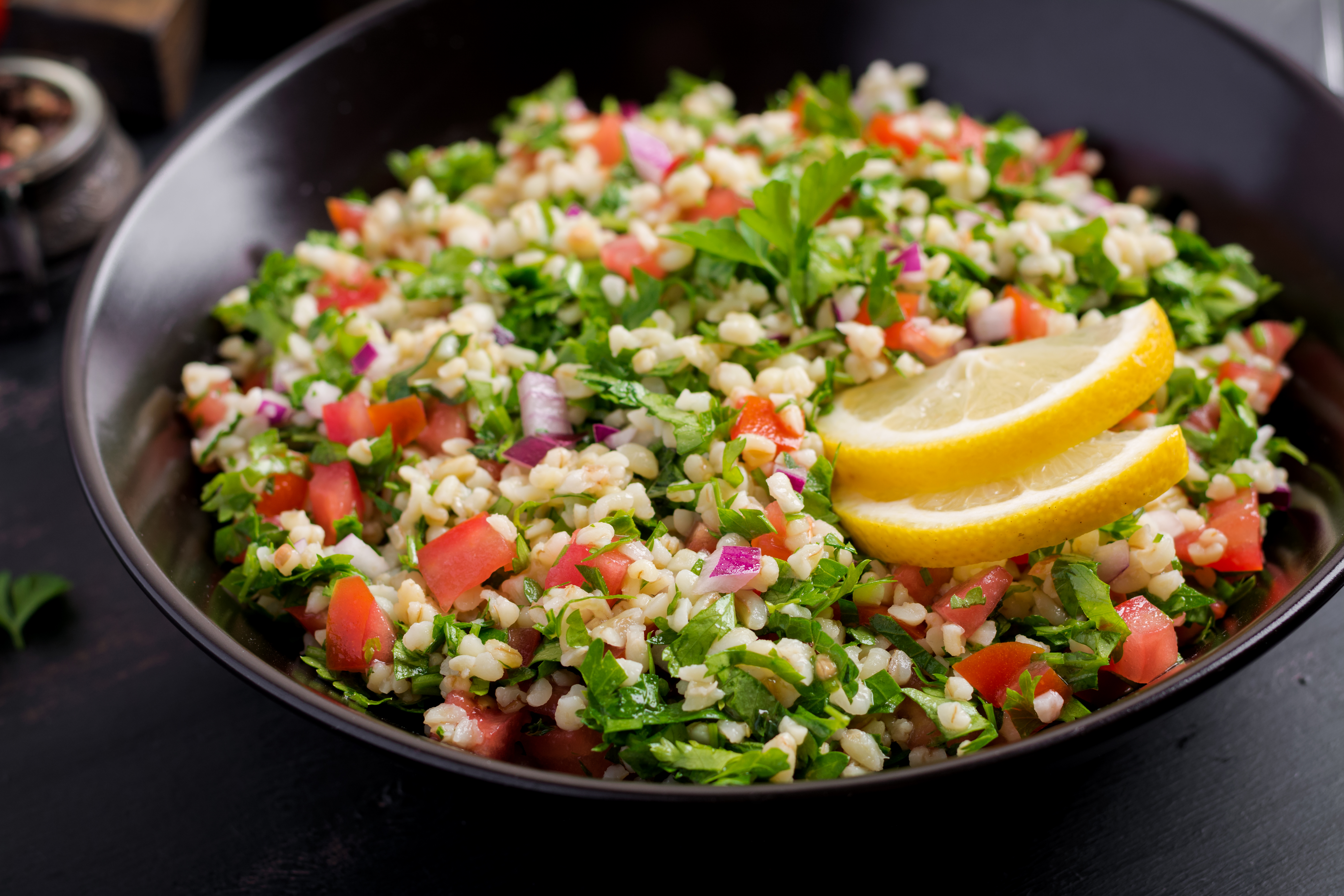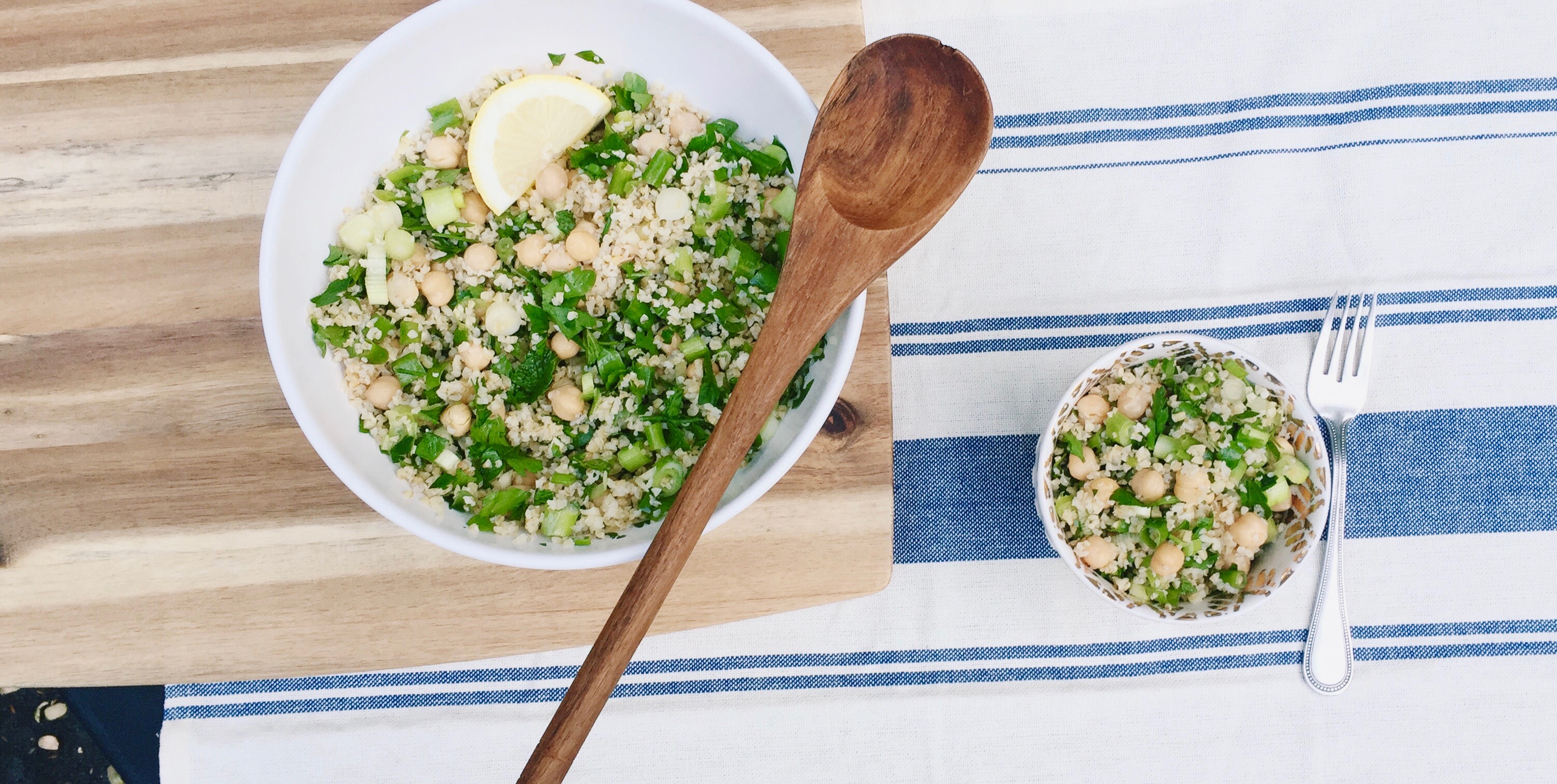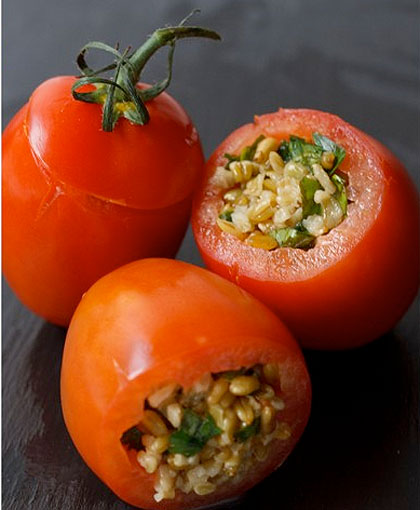Share This
Welcome back to our Spotlight series, where we take a deep dive into the history, nutritional benefits, and cooking practices of a particular grain. This round, we’re off to the Middle East with bulgur and its smoky cousin, freekeh. Let’s learn more about about these two fiber-filled, quick-cooking grains.
What is bulgur? How about freekeh?
Bulgur is not a grain of its own– instead, it’s a process! Bulgur is wheat that has been cleaned, boiled, dried, roughly ground, then sorted by size. Thanks to this extensive process, bulgur cooks up quickly, and can even be prepared without boiling. This preparation technique traces its history back to Northern Africa and the Middle East, where it has been a part of local cuisine for thousands of years. When bulgur is made of young, green wheat that has been smoked, we call it freekeh. The rich, smoky flavor of freekeh suits soups, stews, and salads, making it a perfect year-round staple.
Full of Fiber
Switching to whole wheat is one of the easiest ways to eat more fiber, and bulgur/freekeh are some of our favorite forms of this versatile whole grain. Unlike other varieties of whole wheat, however, bulgur and freekeh are quick-cooking thanks to having been cracked and parboiled– with no sacrifice of texture, nutrients, or flavor! A typical serving of either one contains about 5g of fiber, making them a standout even among other whole grains. The benefits of a diet rich in fiber are extensive, ranging from lowered risk of diabetes, to less inflammation, and even positive effects on aging.
With advances in agriculture, some varieties of bulgur have even more fiber. Sunnyland Mills, one of the founding members of the Whole Grains Council, recently released a variety of bulgur with up to 14g of fiber per serving! This new bulgur was created to maximize the fiber in the endosperm of the wheat, which in addition to the fiber found in the bran leads to an unusually high-fiber bulgur. No matter which variety of bulgur or freekeh ends up in your pantry, rest assured that a delicious and nutritious meal is just minutes away.
Perfect for Busy Cooks
Due to their quick-cooking nature, bulgur and freekeh are perfect for those of us looking to make whole grains fit into a busy schedule. Depending on the size of the grind, it can take as little as ten minutes to boil up a bowl of chewy, nutty bulgur. Most famous for its use in tabbouleh, bulgur also makes an excellent base to bulk up summer salads, where its mild flavor can let your dressing shine. Freekeh’s smokiness make it an excellent side in its own right, or try stirring a cup of it into soups and stews for a complete meal.
For those looking for an even quicker solution, pre-cooked bulgur and freekeh are making their way into the market. Another Whole Grains Council member, woman-owned Harran Natural, offers pre-cooked bulgur and freekeh pouches. These are ready to eat in moments, meaning you can enjoy a healthy, hearty whole grain meal even on the most hectic of days. Additional benefit now that summer is here? No need to turn on the stove!
Ready to Dive In?
- If you’re intrigued by bulgur and freekeh’s double-act, you can find a list of all Stamped bulgur products here, and freekeh here.
- Looking for more bulgur recipes? We have plenty, along with recipes using freekeh too!
- For more on the history of wheat, from which bulgur and freekeh are made, check out our July Grain of the Month post.
Are bulgur and freekeh pantry staples in your household? Did you grow up eating tabbouleh without even realizing it was a whole grain? Leave a comment to let us know! (Rebecca)
To have our Oldways Whole Grains Council blog posts (and more whole grain bonus content!) delivered to your inbox, sign up for our monthly email newsletter, called Just Ask for Whole Grains.




Add a Comment